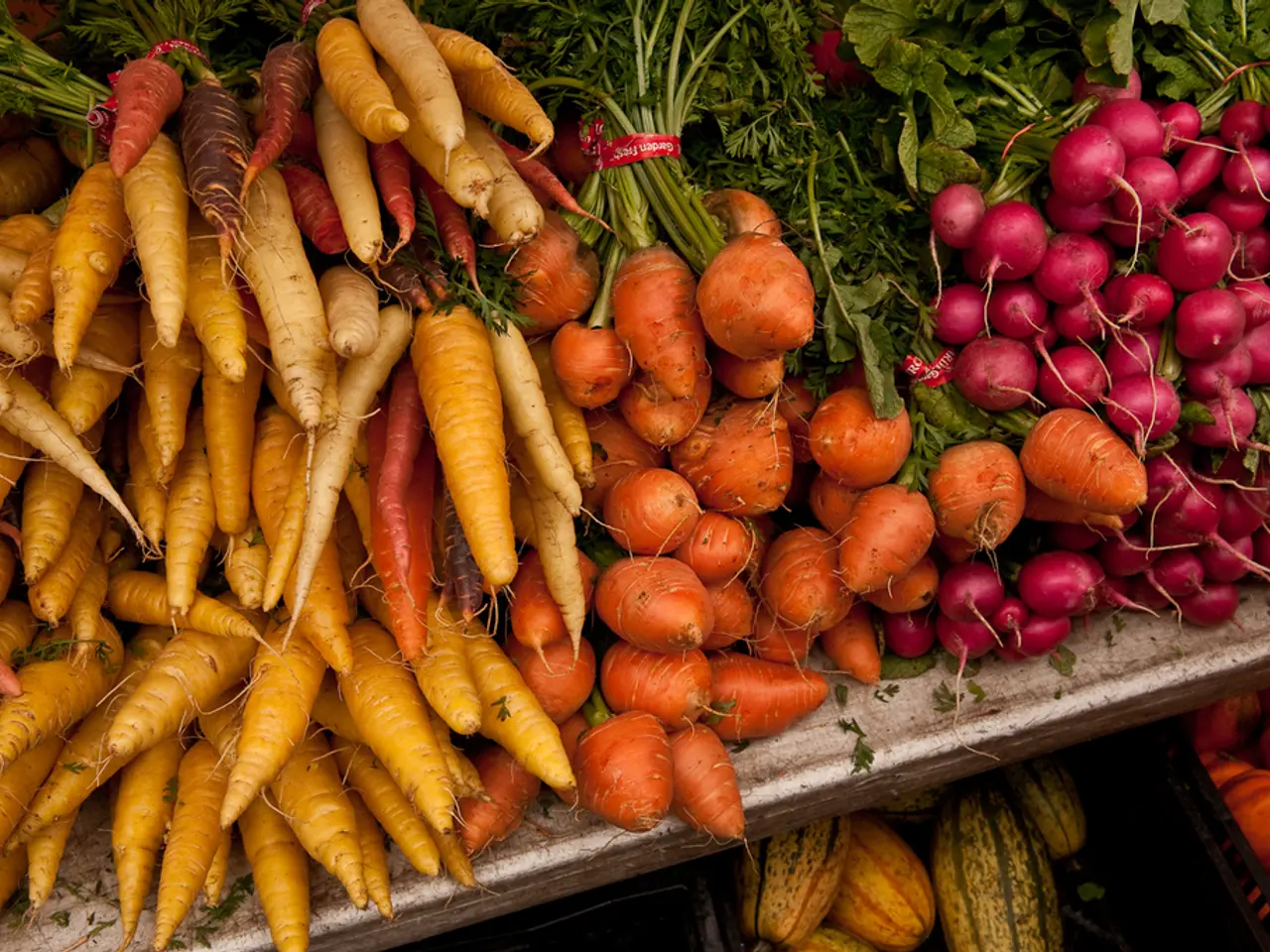Monthly tasks for fruiting plants and vegetables in February
Preparing Your Garden for Spring: A February Guide
As February rolls in, it's time to gear up for the growing season! Here are some easy and productive tasks that every "grow your own" gardener can do to prepare their garden for the spring.
Pruning
Pruning is a crucial task for encouraging healthy growth in woody shrubs, roses, wisteria, fruit trees, blueberries, grapes, vines like clematis and Virginia creeper, and raspberries [1][3].
Dividing and Replanting
Divide snowdrops and replant them to keep bulbs healthy and encourage flowering [1].
Finishing Planting Plans
Finalise your garden layout, decide what crops or plants to grow, and order seeds [1][2].
Applying Organic Mulch
Adding mulch to borders and beds can improve soil and suppress weeds before the growing season [1].
Repair Garden Structures
Check and mend any winter damage to fences, trellises, or other garden supports [1][3].
Soil Preparation
Incorporate cover crops or organic matter into the soil to improve fertility [3].
Start Seeds Indoors
Begin sowing seeds for cool-season vegetables or herbs like cabbage, broccoli, Brussels sprouts, chives, cilantro, and parsley indoors or in cold frames/hotbeds [2][3].
Plant Outdoor Crops (if conditions allow)
In milder areas or where soil is workable and dry enough, plant peas, sweet peas, asparagus (if warm), and new roses [3].
Tool Maintenance
Clean and put away winter garden tools or prepare seed-starting soil pods to streamline spring planting [2].
Garlic Planting
Super healthy garlic can be planted now, suitable for varieties such as 'Solent Wight' and 'Picardy Wight' [4]. Choose the sunniest, best-draining patch of soil to plant garlic, and plant the garlic cloves with the tips 2.5cm below the soil surface.
Fruit Tree Care
Check the base of apple, pear, plum, and cherry trees for perennial weeds and grass encroachment, and remove them [4].
Soft Fruit Bushes
Giving soft fruit bushes a feed just before the buds begin to burst will increase the odds of a good crop this year [5]. Place bird prevention cages over soft fruit plants to protect them from birds.
Growing Aubergines
In a greenhouse or polytunnel, it is possible to sow aubergines in February. However, if growing aubergines outside, wait until March to sow them. Aubergines require a temperature of 18-21°C after sowing.
Supporting Climbing Crops
Use thick hazel stems as natural supports for runner beans, and cornus stems for broad beans and peas.
Cabbage Care
Feed spring cabbages with a granular high-nitrogen plant food to encourage strong growth. Organic gardeners can use organic chicken manure pellets to feed spring cabbages. Remove old, discarded brassica leaves that could be harboring slugs or disease, and pull up old Brussels sprout stems for composting.
Jerusalem Artichokes
Plant Jerusalem artichokes 15cm deep and leave 45cm between the plants in each direction. These tall plants can provide shelter for lower-lying crops.
Raspberry Care
Remove any small, spindly canes from summer raspberries, and remove old autumn fruiting raspberry canes at the base. Tie in the young canes of summer raspberries that haven't fruited yet, trimming the tops back by 8cm.
Preventing Slugs and Weeds
Remove netting from cabbages to check for weeds and slugs, and remove them before replacing the netting.
Force Potted Strawberry Plants
Force a few potted strawberry plants in an unheated greenhouse, conservatory, or well-lit porch to get early fruits.
These activities help set a strong foundation for a successful growing season with relatively low physical effort and risk since soil and plants are still mostly dormant [1][2][3].
[1] RHS (Royal Horticultural Society). (2021). February Gardening Jobs. Retrieved from https://www.rhs.org.uk/advice/guides-to-growing/month-by-month/february
[2] Gardener's World. (2021). February Gardening Jobs. Retrieved from https://www.bbc.co.uk/programmes/articles/51qybjt257z1vj4rj8hkzg8z/february-gardening-jobs
[3] Horticulture Week. (2021). February Gardening Jobs. Retrieved from https://www.hortweek.com/how-to/growing-media/february-gardening-jobs-3010157
[4] BBC Good Food. (2021). How to grow garlic. Retrieved from https://www.bbcgoodfood.com/howto/guide/how-grow-garlic
[5] RHS (Royal Horticultural Society). (2021). How to grow strawberries. Retrieved from https://www.rhs.org.uk/advice/profile?pid=5000009
[6] RHS (Royal Horticultural Society). (2021). How to grow aubergines. Retrieved from https://www.rhs.org.uk/advice/profile?pid=5000013
[7] RHS (Royal Horticultural Society). (2021). How to grow Jerusalem artichokes. Retrieved from https://www.rhs.org.uk/advice/profile?pid=5000007
[8] RHS (Royal Horticultural Society). (2021). How to grow raspberries. Retrieved from https://www.rhs.org.uk/advice/profile?pid=5000004
[9] RHS (Royal Horticultural Society). (2021). How to grow cabbages. Retrieved from https://www.rhs.org.uk/advice/profile?pid=5000006
In this February garden guide, activities such as pruning plants and dividing snowdrops can be considered home-and-garden tasks that promote healthy lifestyle choices for the garden, helping to prepare for the spring growing season. Additionally, the application of organic mulch and the care of soft fruit bushes are gardening tasks that can result in a bountiful home-grown produce, contributing to a healthy lifestyle by ensuring a steady supply of fresh fruits.




